Reds: 5 instances Cincinnati pitchers almost won the NL Cy Young
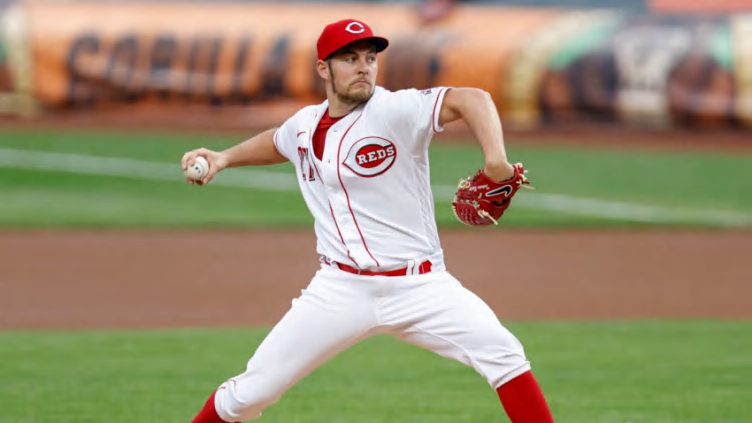
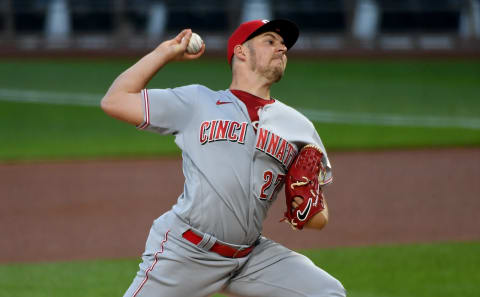
Will Trevor Bauer breakthrough and finally deliver a Cy Young Award winner to the Reds?
The 64-year drought of Cincinnati Reds pitchers coming up winless in the race for the Cy Young Award may be coming to an end Wednesday night. Right-hander Trevor Bauer is in an excellent position to claim his first Cy Young Award. Bauer, who finished sixth in the American League voting in 2018, put together a sensational 2020 season.
The 29-year old Bauer led the senior circuit in ERA, ERA +, WHIP, and hits allowed per nine innings. Additionally, he finished second in strikeouts and was named the NL Pitcher of the Month for September. Quite simply, Bauer is almost solely responsible for ending the Reds six-year playoff drought.
This may be the best chance Reds Country has had to see one of their fan-favorites take home the award. Since the Cy Young Award was first bestowed upon the best pitcher in the league beginning with the 1956 season, the Reds are one of only three National League teams not to have a Cy Young recipient.
What makes it all the more exasperating is the Cincinnati Reds had a 37-year head start on the two franchises (Miami Marlins and Colorado Rockies) who played their inaugural season beginning with the 1993 campaign.
Even though quality starting pitching and the Reds often appear to be oxymorons, there have been five seasons in which Cincinnati pitchers almost collected the elusive grand prize. As far as the runners up are concerned they almost all have unique stories.
There’s the superstar attempting to add one more prize to his trophy case, a couple of Cincinnati farmhands achieving the heights many had been anxiously awaiting., a solid southpaw putting together a dream season, as well as a fellow left-hander who came from out of nowhere and vanished almost as quickly. Let’s take a look back on the near Cy Young misses for the Reds.
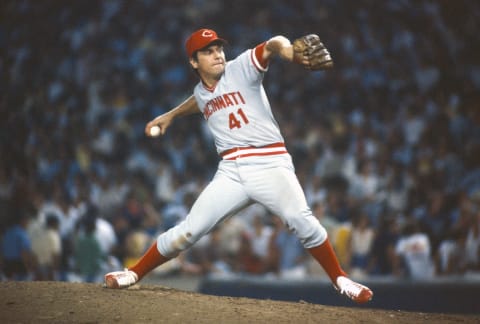
1. Tom Seaver (1981)
Winner: Fernando Valenzuela
They didn’t call him Tom Terrific for nothing. By the time Tom Seaver arrived in Cincinnati in June of 1977, his legacy had been firmly secured. He had already captured three Cy Young Awards pitching for the New York Mets as well as a trio of ERA titles while leading the league in strikeouts five times. Needless to say, Seaver had little to prove individually by the time he became a member of the Reds.
During the 1981 season, Seaver put together the last of his truly great seasons in his remarkable Hall of Fame career. Making 23 starts in the strike-shortened season, Seaver led the National League with 14 wins against only two defeats and posted an excellent 2.54 ERA. Seaver’s terrific numbers would earn him the final of his 12 All-Star appearances while finishing 10th in the MVP voting.
Despite Seaver’s heroics, it was not enough to lead the Cincinnati Reds to the postseason. Due to the player’s strike, MLB divided the season into two halves and despite finishing with the best overall record in baseball, the Reds failed to finish atop the standings in either half thus denying them a trip to the playoffs.
As fantastic as Seaver was in 1981, he was not good enough to topple Fernando Mania. Dodgers rookie left-hander Fernando Valenzuela took baseball by storm. Leading the NL in strikeouts, innings pitched, starts and complete games, the 20-year-old Mexican could not be denied the Cy Young.
Valenzuela would finish his rookie campaign 13-7 with a sterling 2.48 ERA. Not only would Fernando capture the senior circuit’s top pitching award he would also win Rookie of the Year while placing fifth in the MVP balloting. As if that wasn’t enough, he would lead the Dodgers to their first World Series title in 16 years capping a truly remarkable season.
Seaver would pitch one more season for the Reds before heading back to the Mets for the 1983 campaign. Throughout his five and a half years in the Queen City, Tom Terrific would make two All-Star appearances and twice finish in the top five in the Cy Young voting as a Redleg.
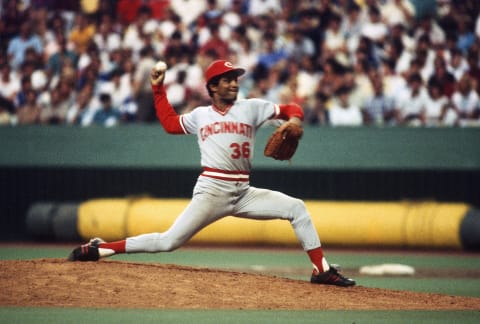
2. Mario Soto (1983)
Winner: John Denny
It was only a matter of time before right-hander Mario Soto would contend for pitching’s ultimate prize. Since making his debut as a 20-year-old during the 1977 season, the Cincinnati Reds front office was convinced they had an ace in the making. It didn’t take long for the Dominican native to reward their trust.
Entering his age 23 season in 1980, Soto would finish fifth in the Cy Young voting during a campaign in which he would allow the fewest hits per nine innings in the National League while also earning top honors in K/9 rate in the senior circuit. However, Soto was just getting warmed up.
He would make his first All-Star appearance in 1982, during a season in which he would also lead the NL in WHIP and tally a ninth-place finish in the Cy Young voting. This was just the calm before the storm of the 1983 season when Soto’s devasting changeup would have hitters shaking their heads as they made their way back towards the dugout.
Mario Soto would end the 1983 campaign 17-13 with a sparkling 2.70 ERA. He would lead the NL with a mind-boggling 18 complete games as well as finishing second in strikeouts, innings pitched and WHIP. Earning his second All-Star appearance, Soto would also finish 14th in the MVP voting.
Despite all of Soto’s greatness, he would not be able to overcome Phillies right-hander John Denny in the Cy Young race. Denny would lead the NL with 19 wins against just 6 defeats in helping Philadelphia reach the Fall Classic.
However, it was Denny’s work down the stretch that ultimately give him the top prize as he was named the NL’s Pitcher of the Month in September while leading the Phillies to the postseason. Interestingly, Denny and Soto’s paths would cross again during the 1986 season.
Denny would finish his 13-year career making 27 starts and going 11-10 as a member of the Redlegs. Unfortunately, arm trouble was beginning to rob Soto of what had been an outstanding career. Mario Soto would go 5-10 in 19 starts and he would only make 20 starts over the next two campaigns before injuries ended his career at just 31-years old.
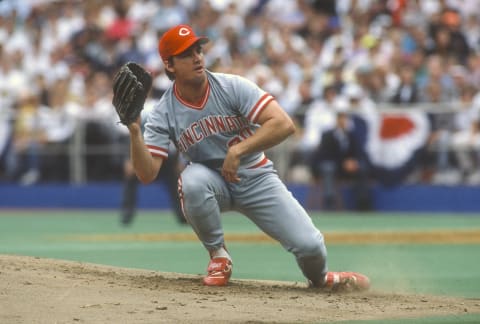
3. Danny Jackson (1988)
Winner: Orel Hershiser
Let’s just say Danny Jackson made a positive first impression during his debut season in Cincinnati. Acquired in a November 1987 trade with the Kansas City Royals, Jackson would have a magnificent season and the best of his 15-year career during the 1988 campaign.
The 26-year-old southpaw would lead the National League with 23 victories and 15 complete games in 35 starts. Jackson would also finish second in innings pitched, shutouts, and was named the NL Pitcher of the Month for August. Unfortunately for Jackson, there was one pitcher just a little bit better.
Dodgers right-hander Orel Hershiser posted an identical 23-8 record while matching Jackson’s league-best 15 complete games. However, Hershiser was just getting started. He would lead the league in shutouts and innings pitched while his 7.1 bWAR is the rare time a pitcher would top the league in that category.
Perhaps what Hershiser is remembered most for during the 1988 season is tossing an MLB record 59 consecutive scoreless innings. Hershiser would almost single-handedly lead the Los Angeles Dodgers to the 1988 World Series crown by capturing the MVP awards in both the NLCS and Fall Classic.
As far as Danny Jackson is concerned, he played a vital role in the Cincinnati Reds 1990 championship season. Jackson had two excellent starts in the NLCS against the Pirates winning Game 3 and tossing six innings of one-run ball in the series clincher in Game 6.
Jackson would leave the Reds via free agency following their World Series title-winning season, but not before posting one of the best individual pitching seasons in franchise history and also helping the Redlegs claim their fifth World Series crown.
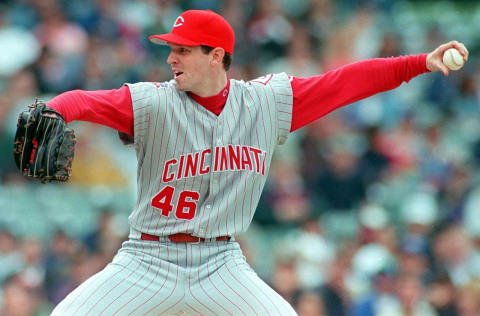
4. Pete Schourek (1995)
Winner: Greg Maddux
When Reds Country recall the 1995 NL Central Division championship team that advanced to the NLCS, most fans will mention names like Barry Larkin, Jose Rijo, and Reggie Sanders. One name that consistently gets overlooked is left-hander Pete Schourek, despite being the runner up for the Cy Young Award.
Schourek’s 1995 is a true Cinderella story. Entering his fifth MLB season, the 26-year-old had never won more than seven games in a season and was claimed off waivers by the Cincinnati Reds in April 1994 after the New York Mets decided to move on from him following three underwhelming campaigns.
However, the stars aligned for Pete Schourek during the summer of 1995. Making 29 starts, Schourek would establish career-best marks in nearly every category going 18-7 with a 3.22 ERA in helping the Reds to a division crown.
His magical season would see him finish second in the senior circuit in wins, third in WHIP, and seventh in strikeouts. But it wasn’t only the regular season where Schourek dominated. Making a combined three starts in the NLDS and NLCS, Schourek allowed just four runs over 21.1 innings while collecting 18 strikeouts and a victory in the NLDS sweep of the Los Angeles Dodgers.
Nevertheless, this may be the first and last time Pete Schourek and Greg Maddux are mentioned in the same sentence. If you’re talking the 1990s era Atlanta Braves, chances are one of the three-headed monsters of Maddux, Tom Glavine, or John Smoltz is going to win the Cy Young. This year it was The Professor’s turn.
As great as Greg Maddux was he might not have ever been better than he was during the 1995 season. Compiling a 19-2 record with a 1.53 ERA, Maddux would lead the NL in wins, ERA, complete games, shutouts, and innings pitched while collecting the final of his four consecutive Cy Young Awards.
For Pete Schourek, the clock struck midnight following the 1995 season. Never again did the left-hander win more than eight games in a single season and he was released by the Reds at the conclusion of the 1997 season. Schourek would go on to pitch for the Astros, Pirates, and Red Sox before making his final MLB appearance in 2001.

5. Johnny Cueto (2014)
Winner: Clayton Kershaw
What more can be said of the Reds best pitcher of the 21st century? Whether it was his myriad of pitching motions, flowing locks, or easy-going personality Johnny Cueto will always be beloved in the Queen City. Luckily for the Redlegs, his pitching success overshadowed everything else.
By the time the 2014 season arrived, Cueto had already established himself as one of the best pitchers in the game while leading the Cincinnati Reds to three postseason appearances. However, his final full season in Cincinnati would be his finest.
Winning a career-high 20 games, Johnny Cueto would lead the National League in starts, innings pitched, strikeouts, and fewest hits allowed per nine innings. Unfortunately, for the third time since 1981, a hurler from the City of Angels would best a Redleg in the Cy Young voting.
There’s no shame in being second best to the Dodgers Clayton Kershaw. Arguably the best pitcher of his generation, Kershaw was his typical dominant self in 2014. The future Hall of Famer would not only win the Cy Young but would add the NL MVP trophy to his mantelpiece as well.
Kershaw would go 21-3 with a league-best 1.77 ERA, six complete games, 0.86 WHIP, and 8.2 bWAR. In other words, a completely dominating season by any measurement. This would be Kershaw’s third, and for the time being final, Cy Young victory.
Reds Top 10 all-time leaders in WAR. Next
Even though it didn’t happen in a Reds uniform Johnny Cueto played an integral role in helping the Kansas City Royals to the 2015 World Series title. Following a trade deadline deal with the Royals in 2015, Cueto would toss a complete game, one-run, two-hit performance against Jacob deGrom and the Mets in earning the Game 2 victory.